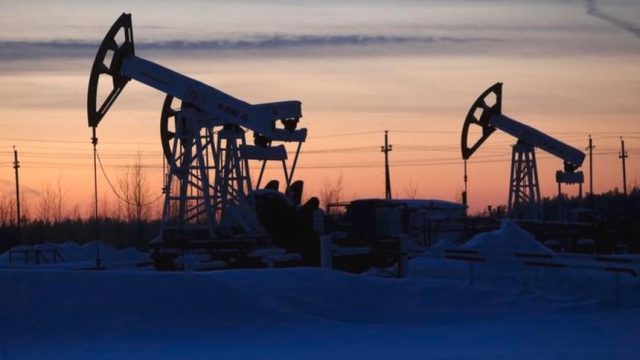Maybe the Solution for Oil Industry Spill Reporting Is Categories

Pump jacks are seen at the Lukoil company owned Imilorskoye oil field, as the sun sets, outside the West Siberian city of Kogalym, Russia, January 25, 2016. REUTERS/Sergei Karpukhin
North Dakota has a problem with the way it reports oil industry spills. Lots and lots of tiny, contained spills are documented by the state and the inclusion of that data in statistical analysis can lead to a false impression about the environmental impacts of oil and gas development in our state.
When the public hears that there has been some number of oil spills in our state, the assumption is that all of those spills had an environmental impact when the reality is that many did not. When I interviewed state Rep. Roscoe Streyle about this situation recently, he pointed out based on data collected by Legislative Council that more than half of spills were less than 10 barrels and/or entirely contained.
Streyle thinks he has a solution to the problem. His legislation, HB1151, would prohibit reporting of any spills of 10 barrels or less that are contained. In 2016 there were 1,546 spills in the State of North Dakota. Of that total, 907 were of 10 barrels or less, which is about 58 percent. Also, just 356 of the spills got off the well pads, meaning nearly 77 percent of all reported spills in the state were entirely contained and thus had pretty much zero environmental impact.
Obviously his legislation would have a big impact on statistics about spills in our state.
But, not surprisingly, his legislation has opposition.
Some of it, like that coming from far-left anti-oil groups like the Dakota Resource Council, isn’t worth taking seriously. They’re obviously in favor of anything which promotes the impression that oil and gas development is devastating for the environment, whether it’s based in factual reality or not.
But a group representing landowners says they don’t like the bill, as Amy Dalrymple reports, and those folks are worth listening to:
Chairman Troy Coons said landowners with oil and gas development on their property want to be informed about all spills, even if the incident is contained on a well location.
“You need all of this data to know what the trends are,” Coons said. “When you get to the size of 10 barrels, that’s a large volume of liquid. It’s too large to be unreported.”
That makes sense. It’s understandable that the people who own the land around, say, a well site would want to know about even contained spills.
So maybe there is room for a compromise. Instead of prohibiting the reporting of spills that are contained and 10 barrels or less, perhaps those spills could be moved to a separate category.
Call them spills with no environmental impact. They could still be tracked so that landowners and the public could still enjoy a degree of transparency on the incidents, but they would be distinct from the large spills or the ones not contained.
Making that distinction is important. The way the state collects and reports the data today is misleading, which is great for the enemies of oil development but not so great for those who want a nuanced understanding of the situation.
Streyle’s legislation is fine as is, to my mind, but if the land owners want the transparency it would be an easy compromise to make.




